Animals are usually found in those respective environments where they are adopted. Even in the sea, different animals are adapted to and found in different areas of the sea. On land, the climate and topographic environment play a big role in the geographic spread of animals. However, farm animals have been domesticated. Farmers have taken them out of their natural environment and use them in environments to which they are not necessarily adapted. The farmer can then make alterations to the environment and farm with animals in these artificial environments.
The Basic Environmental Preferences of Animal Species
Different animals survive (and very often thrive) in those environments to which they are specifically adapted. The adaptation of animals to different environments is very often a matter of general knowledge.
The Current Geographical Distribution of Specific Animal Species
Although species have, over millions of years, evolved by adapting to various different environments, the advent of man has changed this geographical distribution. In non-domesticated species this has meant that areas in which wild animals have thrived have come under pressure through agriculture or forestry or urbanisation. This has resulted in many species becoming extinct or limited in numbers or limited to small geographical locations in which they are now found.
In domesticated species, one can now find farm animals in areas in which they were not originally found. In other words, they live where a man needs to use them. Often these are environments that they are not well adapted to and man must intervene to ensure that they can survive and thrive in these environments.
The diagram below illustrates the main places of origin of most domesticated animal species.
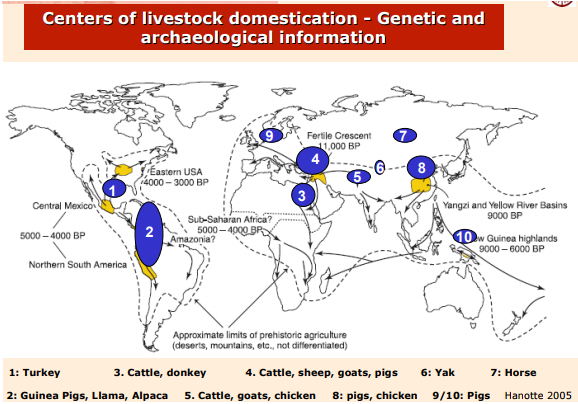
The geographical origin of domesticated species
The figures below show the current geographic spread of several of the main domesticated cattle and goat breeds.
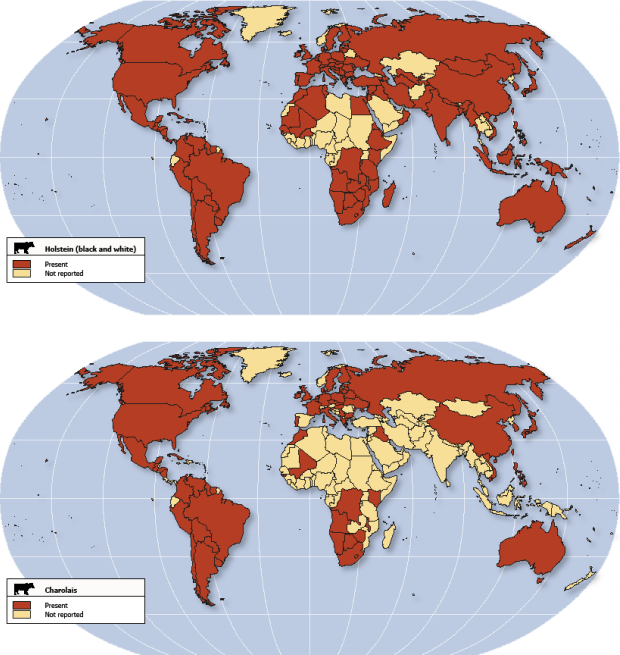
The current geographic spread of the Holstein and Charolais cattle breeds
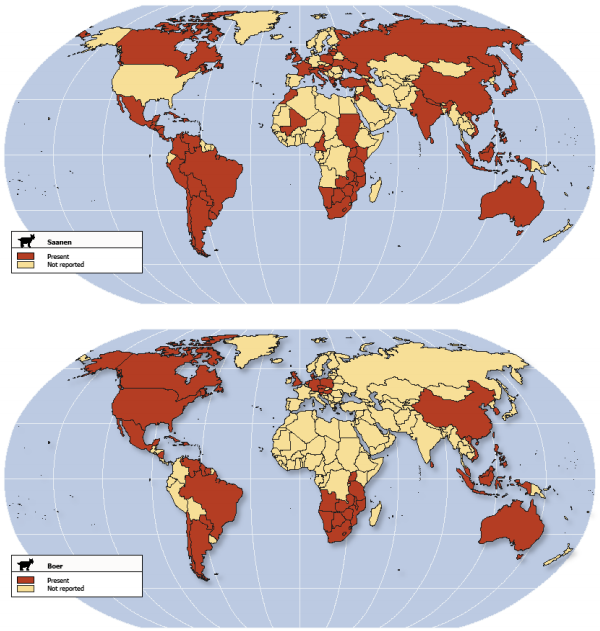
The current geographic spread of the Saanen and Boer goat breeds
The Movement Of Domesticated Animal Species Under Human Control
Click here to view a video that explains the geography of livestock.
As the diagrams above illustrate, although certain domesticated species originated in very specific geographical locations, they have spread right across the world due to their association with humans.
Domesticated animals like cattle have migrated with humans over vast distances. Even through the tropics with all its diseases and pests. During even this short time with humans, these cattle have developed moveable and tick-resistant skins such as those now found in cattle breeds such as the Nguni and Afrikander cattle of South Africa. Those animals that did not adapt during these migrations succumbed in these harsh areas and only the strongest animals continued on their migrations with man to the more southern parts of Africa. Figure below shows the possible migratory routes of cattle with a man over the centuries.
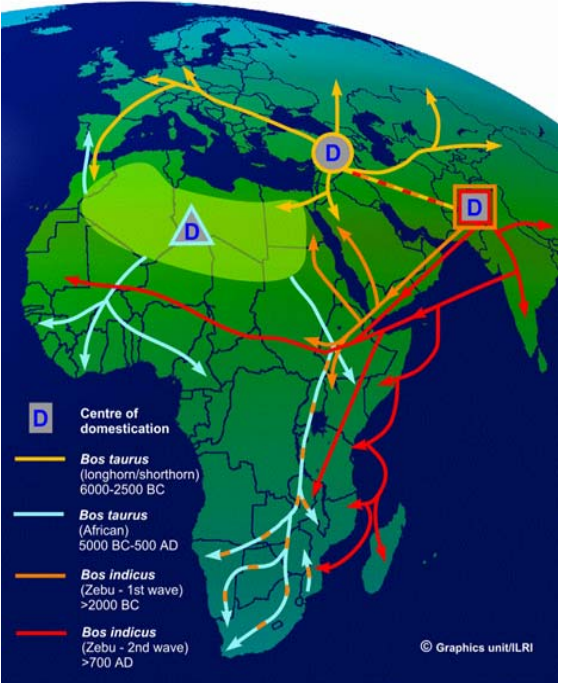
Origin and migration routes of domestic cattle in Africa
The more modern picture of animal migration is shown in the figures below.
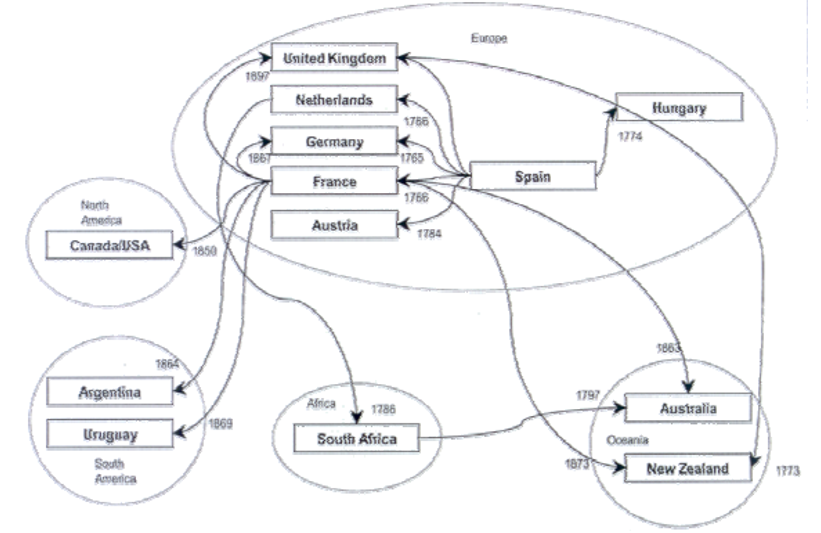
Spread of the Merino Sheep after the fall of the Spanish monopoly

Transfers of improved and unimproved Boran Cattle